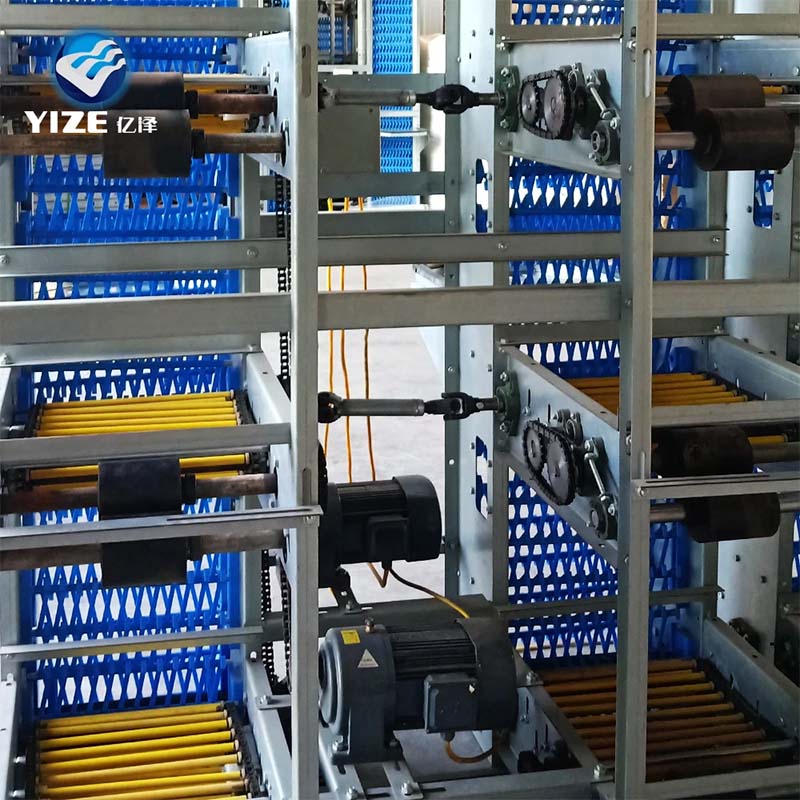Exploring Modern Alternatives to Traditional Chicken Cages for Poultry Farming
Dec . 11, 2024 09:52 Back to list
Exploring Modern Alternatives to Traditional Chicken Cages for Poultry Farming
The Reality of Chicken Cages An Examination of Poultry Farming Practices
The world of poultry farming is vast and complex, with millions of chickens raised globally for their meat and eggs. Within this industry, the method of housing chickens has become a focal point of discussion among animal rights activists, consumers, and farmers alike. The term chicken cage often evokes images of cramped quarters, where chickens are confined to small spaces and deprived of their natural behaviors. This article explores the various types of chicken cages, the implications for animal welfare, and the ongoing debate surrounding cage-free alternatives.
Types of Chicken Cages
There are primarily three categories of chicken housing systems conventional cages, enriched cages, and free-range systems
.1. Conventional Cages These are the most common type used in intensive farming operations. Chickens are housed in small wire cages, typically holding five to ten birds each. These cages offer minimal space, leading to restricted movement and natural behaviors such as nesting, perching, and dust bathing. Critics argue that this environment causes physical and psychological distress for the chickens.
2. Enriched Cages Designed to improve upon conventional cages, enriched systems provide slightly more space and amenities such as perches, nesting boxes, and litter for dust bathing. While these cages allow for some enhanced behaviors, they still do not meet the full spectrum of animal welfare standards, leaving many advocates calling for further improvements.
3. Free-Range and Pasture-Raised Systems These systems provide the most freedom for chickens, allowing them to roam outdoors and engage in natural behaviors. However, maintaining free-range standards can be challenging, as factors such as predator threats and land availability come into play. While these methods offer a better quality of life for chickens, they are often more expensive for farmers to implement and can have economic implications.
Animal Welfare and Public Perception
chicken cage

The conditions in which chickens are raised have garnered significant attention in recent years, particularly regarding animal welfare concerns. Proponents of cage-free systems emphasize that chickens should be allowed to exhibit natural behaviors crucial to their well-being. Numerous studies have indicated that chickens in cages suffer from higher levels of stress and health complications.
Public perception has shifted, with many consumers becoming more conscious of animal welfare standards. This change has led to increased demand for cage-free eggs, prompting many supermarket chains and restaurant brands to pledge to transition away from conventional cage systems. This shift in consumer behavior has driven farmers to rethink their practices, although it may come at a higher cost.
Environmental and Economic Considerations
While animal welfare is paramount, discussions about chicken cages also extend to environmental sustainability and economic viability. Cage-free and free-range systems typically require more land and resources, leading to higher production costs. Farmers must navigate the balance between ethical practices and economic realities, especially in a competitive marketplace.
Moreover, the environmental impact of poultry farming is significant. Practices that prioritize animal welfare must also consider how they influence land use, greenhouse gas emissions, and resource consumption. The challenge lies in developing systems that can provide humane conditions for animals while also maintaining sustainable farming practices.
Conclusion
The debate surrounding chicken cages is multi-faceted, encompassing animal welfare, consumer behavior, environmental sustainability, and economic viability. As public interest in humane farming practices continues to rise, the poultry industry faces pressure to evolve. While improvements have been made, the journey toward fully sustainable and humane chicken farming is ongoing. The question remains how can we create a system that not only meets the ethical standards demanded by society but also sustains the economic realities of modern agriculture? Addressing this question will be crucial for the future of poultry farming.
-
Automatic Feeding Line System-Pan Feeder Nipple Drinker|Anping County Yize Metal Products Co., Ltd.
NewsJul.29,2025
-
Hot Sale 24 & 18 Door Rabbit Cages - Premium Breeding Solutions
NewsJul.25,2025
-
Automatic Feeding Line System Pan Feeder Nipple Drinker - Anping County Yize Metal Products Co., Ltd.
NewsJul.21,2025
-
Automatic Feeding Line System Pan Feeder Nipple Drinker - Anping County Yize Metal Products Co., Ltd.
NewsJul.21,2025
-
Automatic Feeding Line System - Anping Yize | Precision & Nipple
NewsJul.21,2025
-
Automatic Feeding Line System - Anping Yize | Precision & Nipple
NewsJul.21,2025






